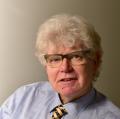
Experts from Time Team have started to dig another section of the site in a bid to find out more about its place in the Anglo-Saxon world.
And they're hoping to learn more about life in the early Saxon period - where there may have already been a social structure developing.
The new search is centred some distance from the world-famous burial mounds on the Garden Field behind the visitor centre and exhibition hall.

Ultrasound tests suggest that the ground may have been disturbed, possibly used as a cemetery, and now archaeologists are trying to find what lies beneath.
Evidence of another cemetery may throw up more light on the used of the land over the centuries.
Time Team expert Dr Helen Geake said: "There was evidence of a cemetery found when the visitor centre was built in the year 2000.
"That was very different to the royal burial mounds - it wasn't for people of the highest standing but neither was it for the really poorest people. It was for those in the middle."
The tests which suggested the Garden Field could be the place to look could also be a cemetery - but what is not clear is where the people who were laid to rest there had lived.

National Trust archaeologist Angus Wainwright said these cemeteries could be older than the burial mounds - but raised more questions about how the land was used in the early Anglo Saxon age.
He said: "We don't know if the people lived in what is now Woodbridge or if they lived on this side of the river."
Dr Geake also hoped the digs would shed some more light on why the area around Sutton Hoo and Rendlesham - four miles away - was so important to the early Anglo Saxons.
She said: "Why was this the centre of Anglo-Saxons' Kingdom? It's a long way from Thetford, or Bury St Edmunds, or Hunstanton.
"It takes longer to walk from here to Bury or Thetford than it takes to sail to Denmark. There is so much to find out."
The dig is going to be very meticulous with archaeologists looking closely at everything that is turned up.

One trench is being dug this year and another in 2025 - and visitors to Sutton Hoo can see the work taking place.
There are even fragments of pottery that have been dug up that the public can touch.
The whole project is hugely exciting for the Time Team and its co-ordinator Tim Taylor.

He said: "If someone had told me that one day I'd be able to bring Time Team to Sutton Hoo and start the search for a new cemetery I'd never have believed it.
"This is really incredible and people can follow what is happening on our dig online through Patreon on timeteamdigital.com
"What is really impressive is the range of trading there was to this area. There are pieces here from as far away as Iraq, Syria, or northern Germany."
Sutton Hoo has become one of the National Trust's most popular sites since its visitor centre and exhibition hall opened at the turn of the century - with Tranmer House which was the home of Edith Pretty following a few years later.
The original excavation overseen at first by Basil Brown took place as war clouds were gathering over Europe in 1939 - but there were further excavations in then 1960s and 1980s.
But this will be the first time that Garden Field has been examined in detail - with the Time Team Data Dome being in place at the site to welcome visitors throughout June.



Comments: Our rules
We want our comments to be a lively and valuable part of our community - a place where readers can debate and engage with the most important local issues. The ability to comment on our stories is a privilege, not a right, however, and that privilege may be withdrawn if it is abused or misused.
Please report any comments that break our rules.
Read the rules hereLast Updated:
Report this comment Cancel